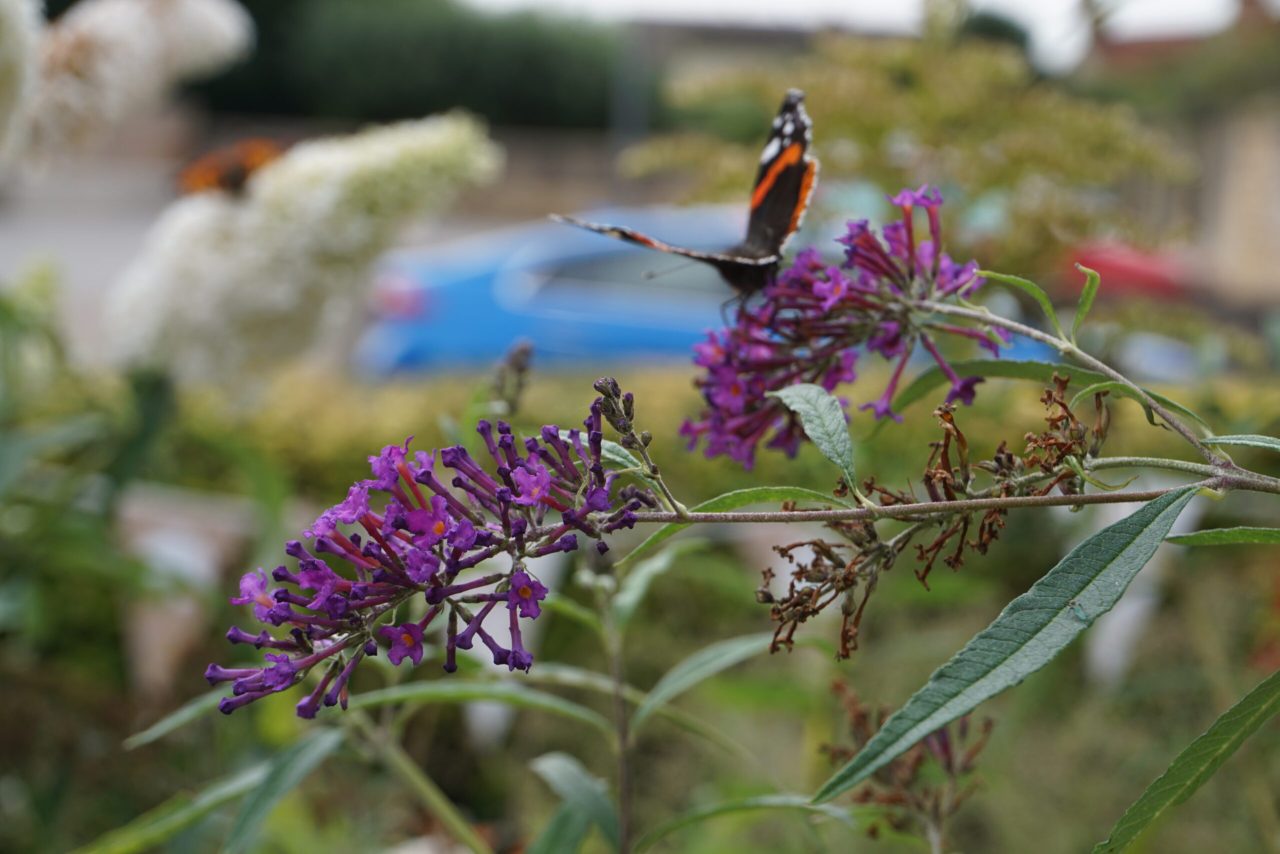Mrs Smith’s Cottage Garden is beloved by staff, visitors, and volunteers. With its bright fresh greenery in the springtime which erupts into glorious colour through the summer creates a relaxing space for all to enjoy. While being a joy for humans, the cottage garden allows all kinds of pollinators to truly thrive.



What makes Mrs Smith’s Garden so ideal?
Close Planting
There are a lot of plants packed into the Mrs Smith’s garden, all working together to make the most of light, water, and pollinator attention.
This close planting allows caterpillars and larvae to move easily from plant to plant allowing them to find fresh food while providing places to hide from predators.


Diversity
Mrs Smith loved flowers and was always delighted to add new finds or varieties to the cottage garden. Having a rich diversity of plant species mixing herbs, wildflowers, and classic cottage garden bedding plants supported a greater diversity of pollinator species, including specialists.


Year-Round Blooms
Mrs Smith was able to have something in bloom throughout the year, which is not an easy feat by any stretch, and we are still working to do through our national lottery heritage fund project. Having food sources for pollinators throughout the year is often key to their ongoing survival, especially in early spring when bees first start to emerge.


What can you do at home?
Pollinator friendly species
There are lots of different pollinator friendly species to choose from when you want to start a pollinator friendly garden. We have split out suggestions into different seasons, and advice new gardeners to select at least 1 species for each season giving support to pollinators throughout the year.
Winter
Snowdrops, Ivy, Crocus, Mahonia, Rosemary, Celandine, Winter Aconite
Spring
Apple Tree, Daffodils, Alliums, Lungwort, Cowslip, Forget Me Not
Summer
Lavender, Comfrey, Foxgloves, Phacelia, Chives, Strawberry
Autumn
Dahlias, Wallflowers, Asters, Honeysuckle, Abelia, Sedum
Leave a little mess
A perfectly neat and tidy garden removes a lot of the shelter which is required by pollinators. Allowing a little mess into your garden is the easiest way to create environments where species can rest, lay eggs, and hide from predators.
Leaving leaflitter, and any other fallen plant material, in place is an easy place to start. It will provide a home for a wide range of different insects the ideal place for them to nest or find shelter, this could be done across the garden or simply select a quiet corner to leave messy.
No Mow May! Neat and tidy lawns don’t provide a lot of opportunities for pollinators to feed or shelter. Reducing how often you mow your lawn and allowing plants like daisy, dandelions and clover to bloom makes a big difference to pollinators. This is especially important in the spring when pollinators are first starting to emerge and look for food.
Sources:
- https://www.rhs.org.uk/wildlife/pollinators-decline-in-numbers
- https://www.nature.com/articles/s41467-019-08974-9
- https://butterfly-conservation.org/butterflies/why-butterflies-matter
- https://friendsoftheearth.uk/nature/gardening-bees
